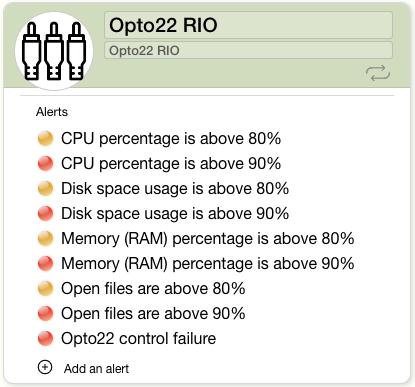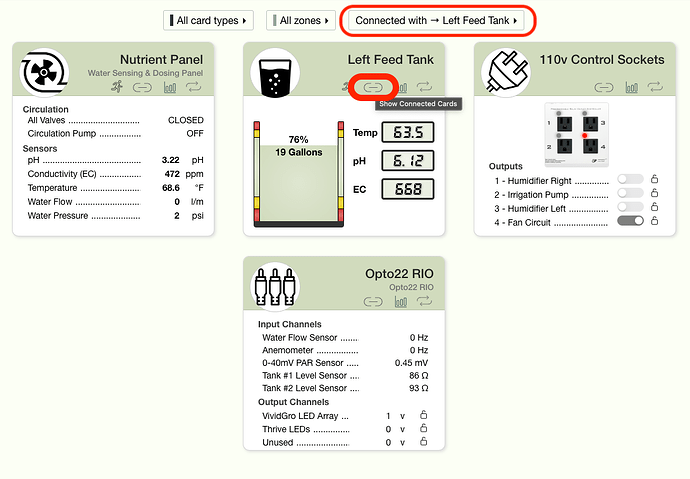Version 2023.7.7
![]() Published July 22, 2023
Published July 22, 2023
View Connected Cards
Each card has a new link style icon, that when clicked shows all cards connected to that card.
This lets you quickly see which cards send inputs into this card, and which cards are sent output from this card.
A full list of connections can be found in the Connected Cards section on the back of the card.
System Resource Alerts
Cards that represent the edge controller host (Opto22 and VeeaHub cards) now have alerts for critical system resources
- CPU % - When the CPU is being over-taxed, it can slow down the system
- Disk Space % - When the disk space gets full, you risk running out and causing a failure
- RAM % - When the memory (RAM) percent gets too small, the controller may not have enough to run
- Open Files - This is a limited resource with generally plenty of capacity, but failures can occur if this resource becomes filled
System Resource alerts are rare, and the action to take is to contact support@microclimates.com for further investigation.

Sensor Communication Failure Alerts

A new alert has been added to sensors that have communication failures.
This is a specific type of failure where a request to communicate with a sensor is denied.
Reduced Alert Sensitivity
Two algorithms have been added to reduce the noise that some sensors can generate
-
Out of Bounds Detection - If a sensor provides a reading that is out of bounds, say 1000% humidity, the reading is thrown out. Upon receiving five out of bounds readings, the alert is fired. This prevents one or two bad readings from causing alert flapping
-
High Swing Detection - Many things being sensed don’t change much. For example, the water level in a tank rarely goes from 80% to 20% within one reading. Each sensor has been given a maximum change between readings, where if the reading is beyond this range it is considered an erroneous reading. This is self healing as subsequent readings at the new level are not thrown out. This algorithm prevents alert flapping when a sensor gets one bad reading, but still within the Out of Bounds detection (above)
